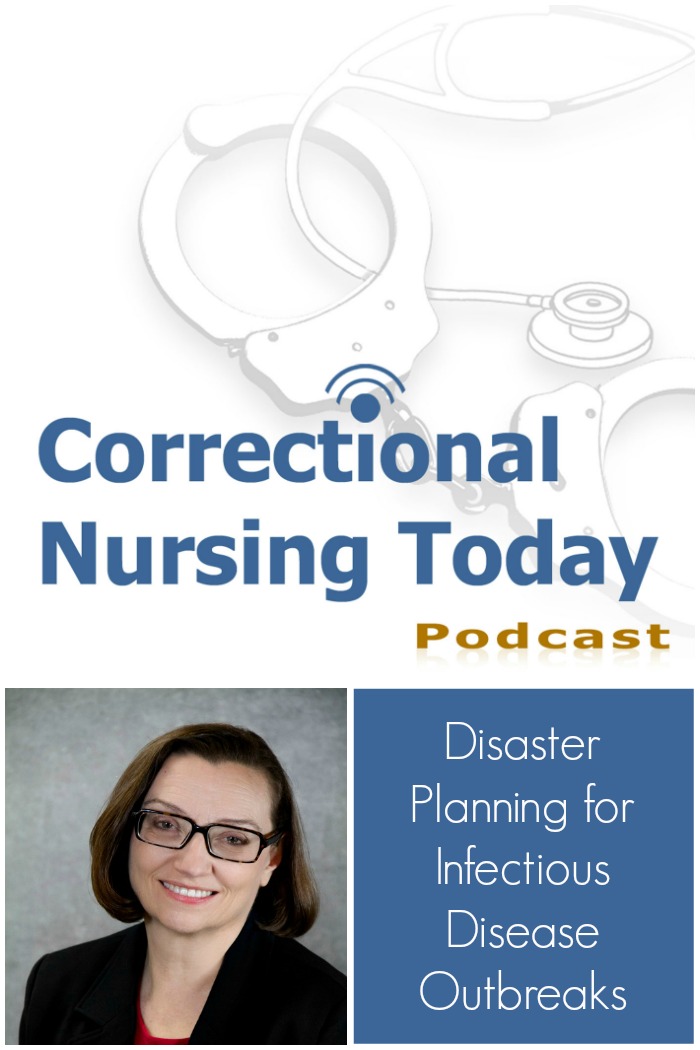Sue Lane, RN, CCHP and Sue Smith, MSN, RN, CCHP-RN join Lorry to talk about “Disaster Planning for Infectious Disease Outbreaks”. They presented this topic at the 2015 NCCHC Spring Conference on Correctional Health Care in New Orleans, April 11-14.  Correctional facilities are prone to the rapid spread of infectious disease. The incarcerated patient population has a greater likelihood of being diagnosed with an infectious disease due, in part, to poor lifestyle choices and poor hygiene habits. The overcrowded nature of many correctional settings and the age of some structures add to the potential for an infectious disease outbreak. In addition, the stress of incarceration can weaken the immune system.
Correctional facilities are prone to the rapid spread of infectious disease. The incarcerated patient population has a greater likelihood of being diagnosed with an infectious disease due, in part, to poor lifestyle choices and poor hygiene habits. The overcrowded nature of many correctional settings and the age of some structures add to the potential for an infectious disease outbreak. In addition, the stress of incarceration can weaken the immune system.
Some of the most common outbreaks include tuberculosis, norovirus, and chicken pox. Flu season brings in H1N1 and there was concern about Ebola recently. If we are not prepared, it can be a disaster.
Preparation Pointers
The basics of disaster planning for infectious disease outbreaks are just that – basic. The difficult part comes in finding the time and motivating staff and organizational leaders to plan ahead to avert a disaster when infection strikes. Here are a few preparation pointers:
- Create an understandable policy and procedure for managing the various types of possible outbreaks.
- Regularly education health care staff about the outbreak plan. This should be at orientation and at least annually.
- Share infection management information with the officer staff. This can reduce panic and stress if an outbreak occurs.
- Practice the outbreak plan as one of the possible disasters in the disaster drill schedule.
- Refresh staff and officer information during regular flu seasons and any time there is a high alert for an infection entering the facility.
Are you ready to avert an infection outbreak disaster in your setting? Share your tips in the comments section of this post.
Leave a Reply